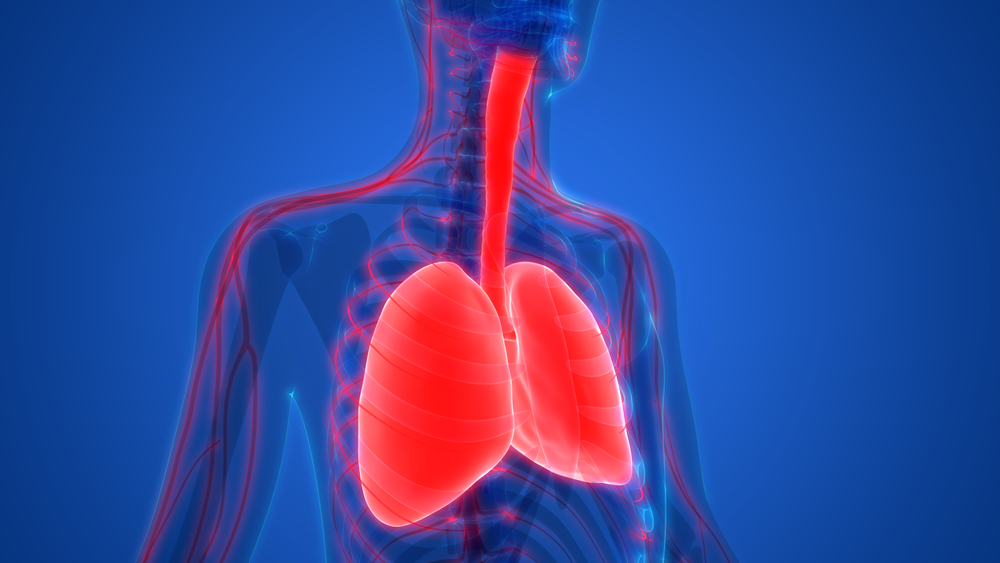Breathing Exercises Enhanced Respiratory Capacity of Late-onset Pompe Disease Patients

Frequent inspiratory muscle training — a set of breathing exercises to strengthen the respiratory muscles making it easier to breathe — enhanced the breathing capacity of late-onset Pompe disease patients with insufficient respiratory function, a small pilot study has found.
The study, “Safety and efficacy of short- and long-term inspiratory muscle training in late-onset Pompe disease (LOPD): a pilot study” was published in the Journal of Neurology.
The final stages of late-onset Pompe disease usually are marked by a progressive decline in lung function. Estimates indicate this respiratory failure results in early death in 70 percent of these patients.
Long-term treatment with enzyme replacement therapy (ERT) with human alpha-glucosidase (GAA), the deficient protein in Pompe disease, has been shown to slow disease progression and stabilize patients’ pulmonary function.
However, long-term follow-up studies have reported that about one-third of patients treated with ERT respond poorly to the treatment, leading to decline of lung function and ventilator assistance, researchers explained.
Respiratory muscle training (RMT) is an established therapy for patients with muscular wasting diseases, namely those with Duchenne muscular dystrophy (DMD), and for lung diseases, like chronic obstructive pulmonary disease (COPD).
The most common forms of RMT include both the muscles used to inspire — inspiratory muscle training (IMT) — and to exhale, expiratory muscle training (EMT).
The mechanism behind RMT is to use repetitive forced voluntary muscle contractions of the inspiratory and/or expiratory muscles, using a pressurized device.
While some clinical studies have used RMT in late-onset Pompe disease, the use of different methods makes it hard to compare and assess the therapy’s effectiveness and safety.
The study’s primary goals
In this pilot study, a team of researchers performed a prospective evaluation of the safety and effectiveness of IMT in late-onset Pompe disease patients receiving ERT.
The main objective was to assess the therapy’s effectiveness after six weeks of repetitive IMT combined with a gradual increase in resistance to inspiration.
Secondary objectives included assessing changes in several parameters of lung function — forced vital capacity (FVC), the percentage of forced expiratory volume in one second (FEV1; a measure of how much air can be exhaled in one second after a deep inhaled breath), and maximum expiratory pressure (MEP), among others.
Additional parameters included patients’ scores in the functional muscular endurance, measured by the 6-minute walk test (6MWT) and the Borg Scale, as well as changes in quality of life, measured by St. George’s Respiratory Questionnaire (SGRQ) and MMRC-Dyspnea scale, which quantifies disability due to shortness of breath (dyspnea).
The 6MWT measures the maximum distance an individual is able to walk for a total of six minutes on a hard, flat surface. The patients may walk at their own pace and stop and rest as many times as needed.
The Borg Scale is a way to measure the intensity of exercise.
Researchers made a first evaluation at the end of the training period (first six weeks), once again after six weeks of no training, and finally at week 40. The total length of the study was 52 weeks.
Eleven patients (nine women and two men), all with confirmed mutations in the GAA gene, participated in the study.
The IMT occurred five days a week and consisted of seven intervals with 15 inhalations each (two minutes each), with six breaks in between of one minute each. The total daily duration of the training was 30 minutes per day.
IMT began with a resistance of 30% of the pressure measured at the beginning of the study for each participant, followed by an inspiratory resistance increase of 10% every second week. This was maintained until reaching a maximum Borg score below seven.
Following the six-weeks of training, and after the no-training period, patients enrolled in the 40-week training. In this, the level of resistance was increased by 10-15% of the values at baseline every visit, according to the patient’s willingness.
Overall, IMT was well-tolerated. During the study, researchers registered seven adverse side effects, which included pain in the face or back muscles, respiratory infections, headache and stroke.”There was no association between the occurrence of [side effects] and the increase of resistance, training period or Borg scale,” researchers wrote.
Researchers reported an excellent compliance within the first weeks among participants, with the increase of inspiratory resistance being well-tolerated and without requests to reduce the level of resistance. However, participants’ willingness to follow the training program declined continuously in the 40-week period.
Within the six-week period, researchers observed a significant increase in patients’ maximum inspiratory pressure — the measure of patient’s inspiratory muscle strength — of 15.7%. At week 52, the inspiratory capacity increased by a mean of 26.4.
During the non-training period of six weeks, the values remained stable and researchers saw no clinically meaningful decline in the secondary outcome parameters.
Despite the increase in inspiratory capacity seen in the two training periods, this increase had no effect in the lung function parameters, like FVC, FEV1, neither in patients’ perceived quality of life nor change in their dyspnea score.
Overall, these results suggest that “frequent IMT may be beneficial for patients with LOPD [late-onset Pompe disease] and clinical or spirometry signs of respiratory insufficiency,” researchers wrote.
“Controlled, randomized long-term multicenter trials with larger sample size and a combination of inspiratory muscle strength and endurance training will help to define recommendations for respiratory treatment in patients with LOPD more precisely and evaluate the effects of frequent IMT over a long period of training,” the study concluded.






